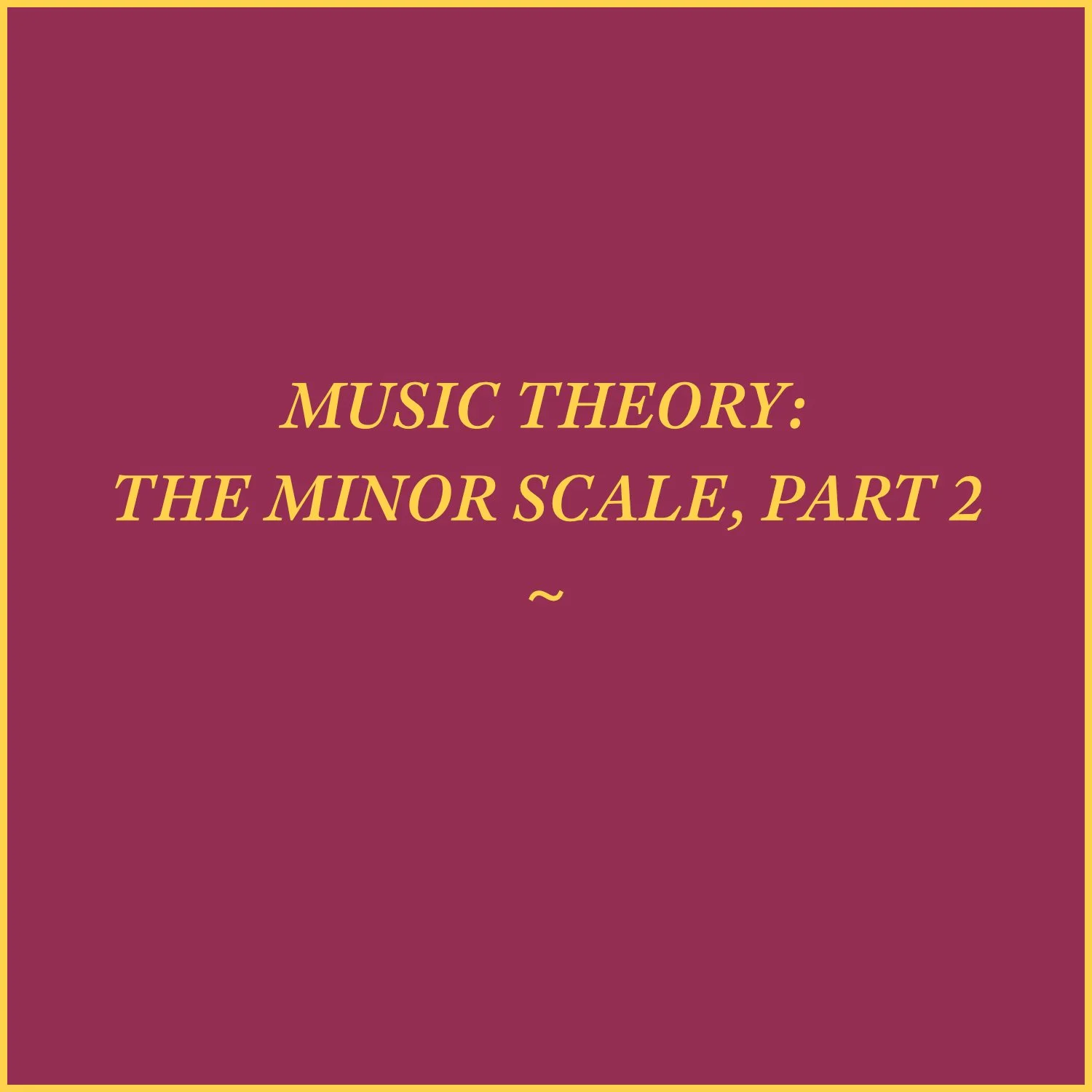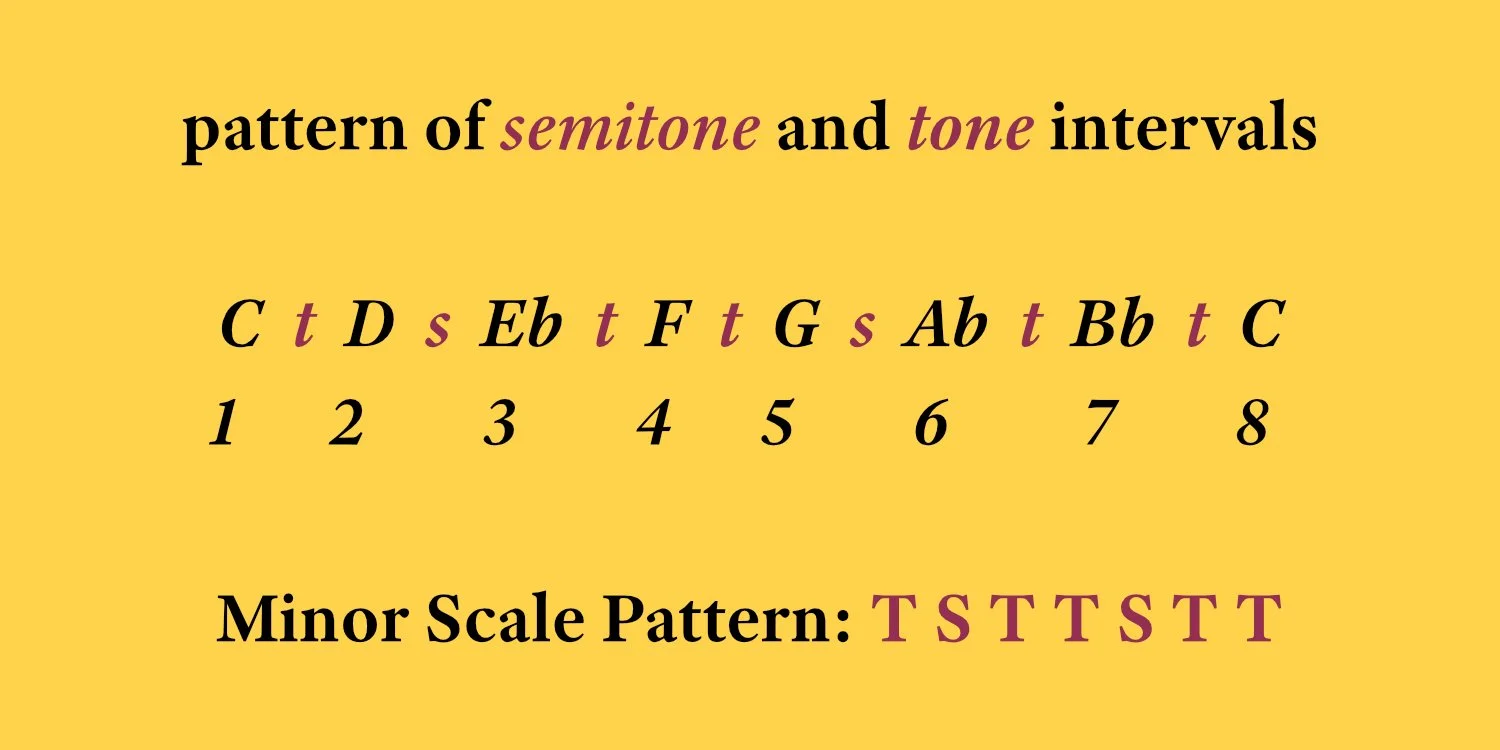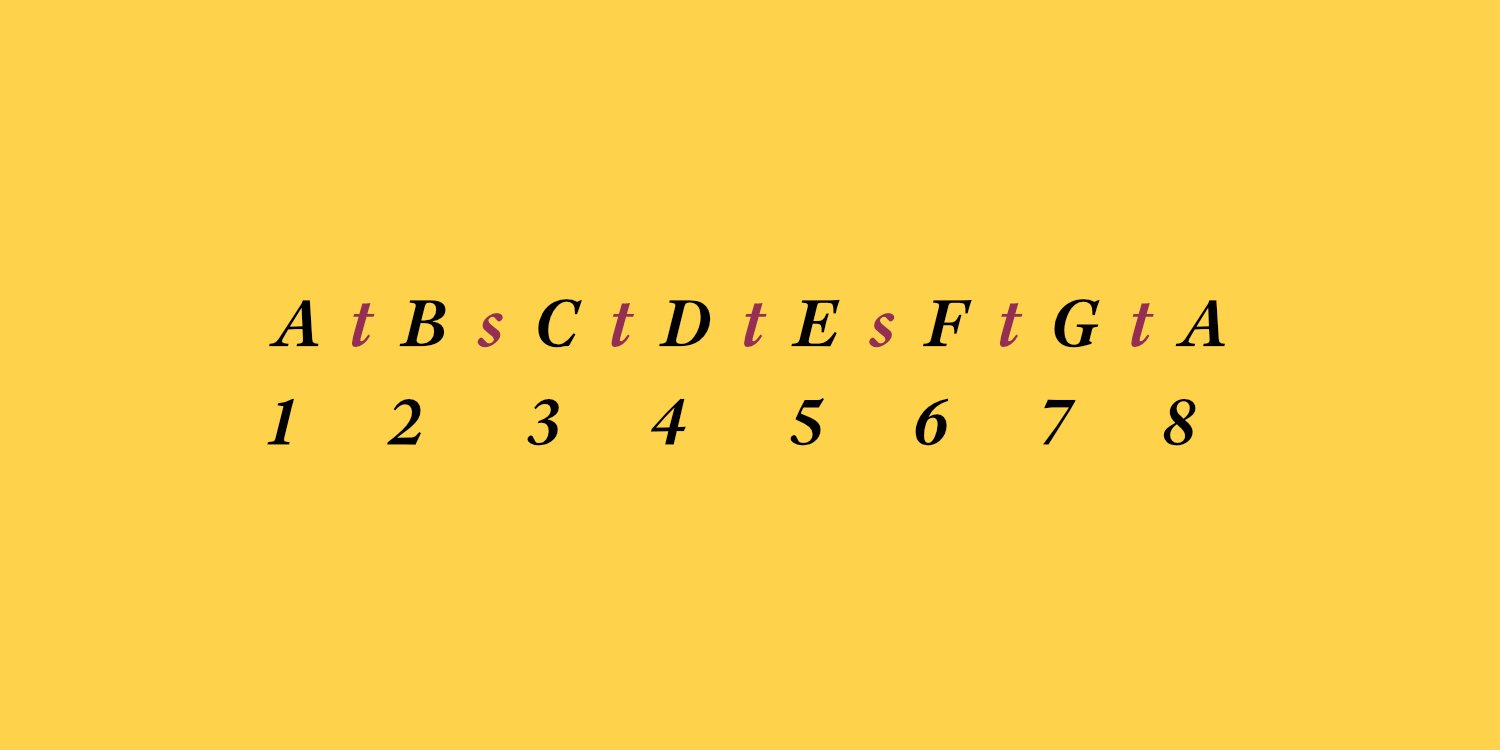What is a Scale?
A scale is a pattern of notes that create a certain feeling and atmosphere. Most music, songs and melodies are built from the notes of a scale. In Western music, we use the Major and Minor scales to compose and create music; in jazz music, modes are also common.
The C Minor Scale
A minor scale has a profoundly emotional and moving feeling to it. It sends us into deeper states of feeling and sensing life. Some people give a simple example: major scales/chords are happy, and minor scales/chords are sad, but there is much more to them than this black-and-white explanation. Have a listen and see what your body feels.
How to create a Minor Scale?
If we take the C major scale C D E F G A B C and create a minor scale from it, we need to flatten 3, 6, and 7 notes of the scale by a semitone, which are E, A, B, giving us Eb, Ab, Bb. See the minor scale below:
C D Eb F G Ab Bb C
All minor scales are built on a pattern of Semitone and Tone intervals.
A semitone is the smallest distance between two notes. Therefore C to C# is a semitone, D to D# is a semitone E to F is a semitone, as these are the notes that live next door to each other.
A tone or whole tone is created from 2 semitones.
For example, C - D is a tone as you have to step C to C# - 1 semitone, then C# to D - 2nd semitone. Another tone is E - F# or G - A.
The minor scale is made up of Semitones and Tones. So if we take the C minor scale and work out the pattern we get:
From this pattern, you can start on any note and work out a minor scale. Let’s do a A minor…
Family - Relative Major/Minor
Like every good family, you have your favourite relatives that are harmonious and understanding! This is no different for the musical family. In the musical family, every minor scale has its harmonious and favourite major scale! What makes this so? The relative major and minor scales are created from the same notes but start on different ones.
Example:
C D E F G A B C - C major is the relative to A minor - A B C D E F G A
If you look at the C major and A minor scales, we can see they don’t have any flats or sharps! They will sound fabulous when played next to each other in a chord progression if you start with the C major and then continue playing.
C D E F G A B C D E F G, you can see where the A Minor begins (notes in blue)! It’s a very simple idea when you understand it.
Eb F G Ab Bb C D Eb - Eb major is relative to C minor - C D Eb F G Ab Bb C.
Another way to find the relative minor from the Eb major scale is to go back three notes, start Eb and go back 3 notes, and you will land on C.
To find the relative major from a C minor scale, you need to go forward three notes. So start on C, go forward three notes and will land on Eb.
Below are great warm-ups for you to practice your minor scales.
The Practice
Single note Toning on numbers - be conscious of the vowel you are holding
Building the scale - 1 2 1, 1 2 3 2 1, 1 2 3 4 3 2 1… etc.
Sing scale on ah - getting faster and faster
Call and Response - small melodies on 1 2 3 4
When singing the numbers, beware that each number has a vowel or diphthong that you want to stay on when holding notes…
1 - ah
2 - oo
3 - ee
4 - or
5 - i
6 - ie
7 - eh/er
8 - aye
Choose the correct scale for yourself. The one that feels comfortable for most of the range.
NOTE: When you are practising the exercises in the recordings, make sure to listen closely to what your body tells you. Always sing with kindness and a gentle, passionate heart. Be aware if muscles are overactive and begin to slowly soften them so that a feeling of flow can be present, allowing the natural voice to be as it is.
BOOKINGS
Term 2 is quickly coming to a close, and I am fully booked.
Holidays: Sunday, June 25th - Sunday, July 9th.
Bookings are OPEN for Term 3
In Love and Song,
The Sound Weaver




